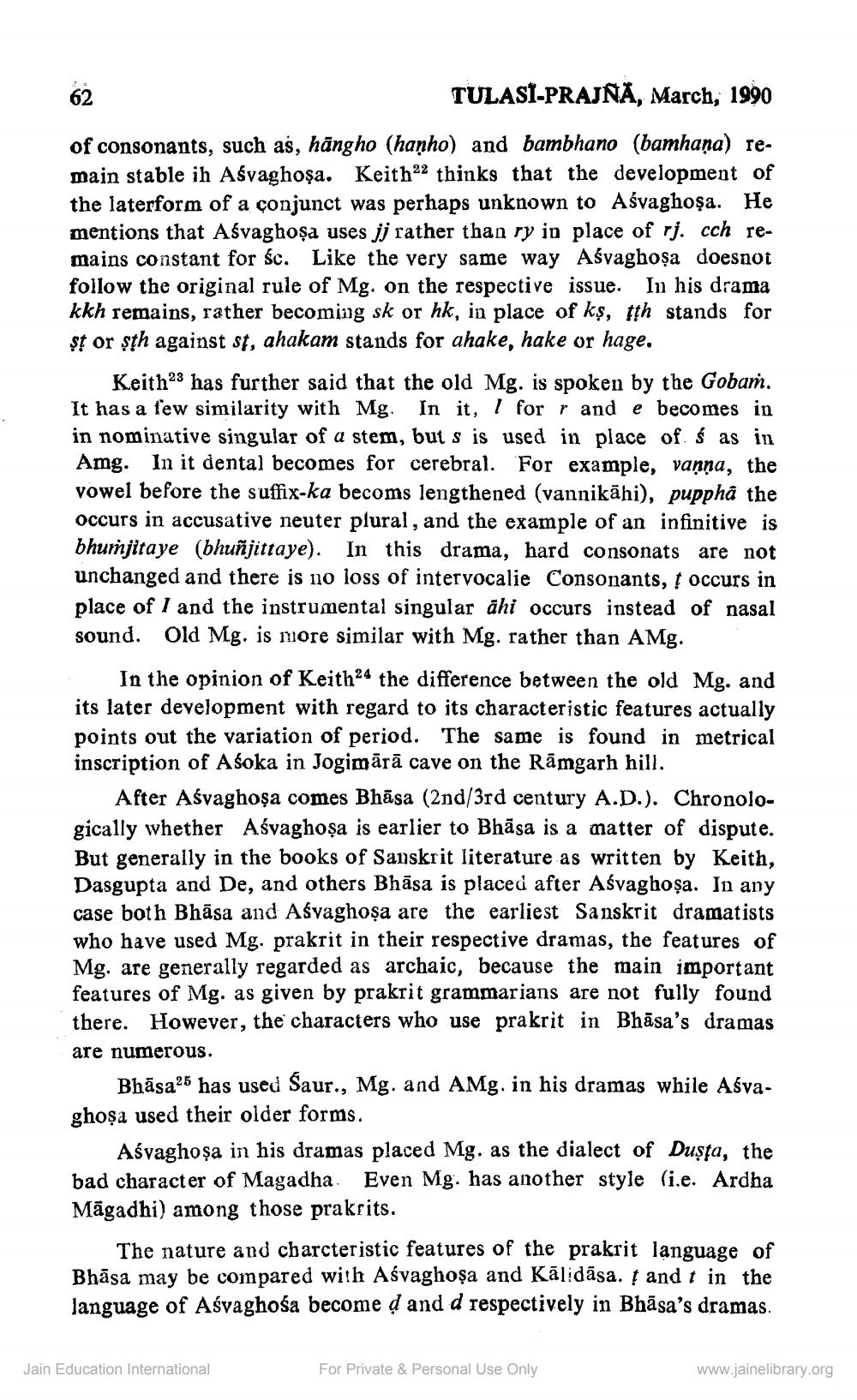________________
TULASI-PRAJNA, March, 1990
of consonants, such as, hāngho (hanho) and bambhano (bamhana) re. main stable ih Aśvaghoşa. Keitha thinks that the development of the laterform of a conjunct was perhaps unknown to Ašvaghoşa. He mentions that Ašvaghoșa uses jj rather than ry in place of rj. cch remains constant for śc. Like the very same way Aśvaghoṣa doesnot follow the original rule of Mg, on the respective issue. In his drama kkh remains, rather becoming sk or hk, in place of ks, th stands for $t or șth against sf, ahakam stands for ahake, hake or hage.
Keith23 has further said that the old Mg. is spoken by the Gobań. It has a few similarity with Mg In it, I for r and e becomes in in nominative singular of a stem, but s is used in place of Ś as in Amg. In it dental becomes for cerebral. For example, vanna, the vowel before the suffix-ka becoms lengthened (vannikāhi), pupphâ the occurs in accusative neuter plural, and the example of an infinitive is bhumjitaye (bhuñjittaye). In this drama, hard consonats are not unchanged and there is no loss of intervocalie Consonants, occurs in place of I and the instrumental singular āhi occurs instead of nasal sound. Old Mg. is more similar with Mg. rather than AMg.
In the opinion of Keith24 the difference between the old Mg. and its later development with regard to its characteristic features actually points out the variation of period. The same is found in metrical inscription of Asoka in Jogimārā cave on the Rāmgarh hill.
After Aśvaghoşa comes Bhāsa (2nd/3rd century A.D.). Chronologically whether Ašvaghoşa is earlier to Bhāsa is a matter of dispute. But generally in the books of Sanskrit literature as written by Keith, Dasgupta and De, and others Bhāsa is placed after Aśvaghoşa. In any case both Bhāsa and Asvaghoşa are the earliest Sanskrit dramatists who have used Mg. prakrit in their respective dramas, the features of Mg. are generally regarded as archaic, because the main important features of Mg. as given by prakrit grammarians are not fully found there. However, the characters who use prakrit in Bhāsa's dramas are numerous
Bhāsa25 has used Saur., Mg. and AMg. in his dramas while Aśvaghoșa used their older forms.
Ašvaghoṣa in his dramas placed Mg. as the dialect of Duşta, the bad character of Magadha. Even Mg. has another style (i.e. Ardha Māgadhi) among those prakrits.
The nature and charcteristic features of the prakrit language of Bhäsa may be compared with Ašvaghoşa and Kālidāsa. t and t in the language of Asvaghośa become d and d respectively in Bhāsa's dramas.
Jain Education International
For Private & Personal Use Only
www.jainelibrary.org




